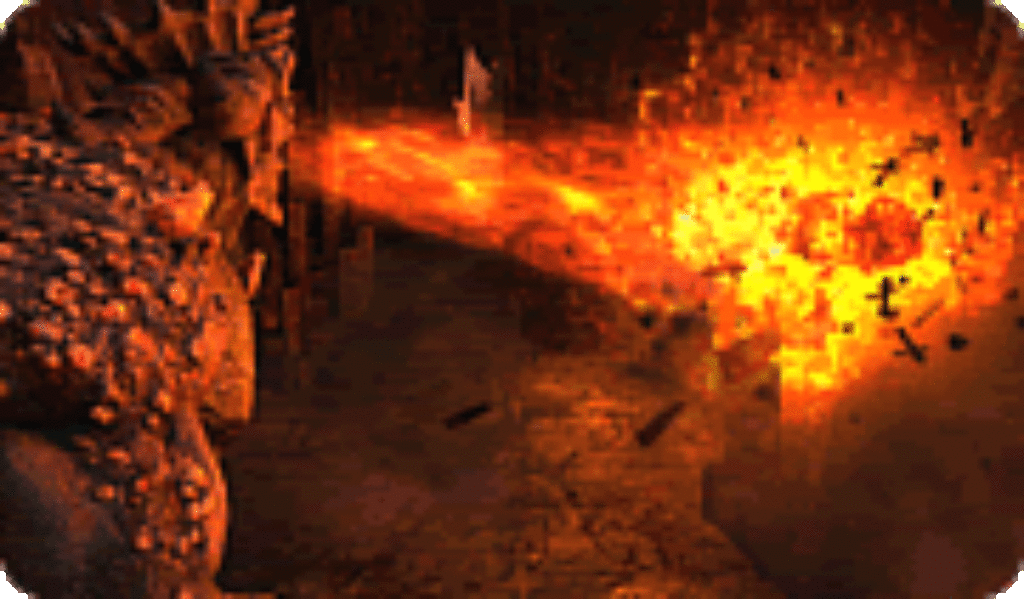
The book is always better.
Such is the case with Dante’s Inferno, which has been transmogrified into an M-rated video game. Sure, it might help a severely sleep-deprived collegian answer a question or two on an English lit exam. (How many circles of hell are there?) But Dante Alighieri would surely be horrified at what 21st-century society’s done with his 14th-century masterpiece.
Mangled Theology
First, a little background: Dante’s “The Inferno” was written as part of his Divine Comedy in Italy, shortly before the Renaissance kicked into high gear. Penned in the first person, Dante serves as the poem’s everyman, hiking through Hades to converse with sinners and report on their horrific and poetically just eternal punishments. Aided by the classical poet Virgil (a symbol of human reason) Dante represents all Christians on their path to salvation, the first step of which involves grappling with the ghastly consequences of our own sin. Thus, the nine circles of hell—the first is limbo; the remaining eight are devoted to such things as lust, gluttony, greed, wrath, heresy, violence, fraud and betrayal. Dante’s word pictures help us get a grip on the reality that these sins keep us walled off (quite literally, in the inferno) from God.
Fast-forward seven centuries, and Dante’s world has been recast. It’s not an improvement.
Yes, the nine circles are still here. And the game still pays lip service to Dante’s medieval piety. (Enterprising gamers can find the entire poem available on the disc.) But the game’s Dante—still at the center of the action—is no poet. Rather, he’s a guilt-stricken crusader who committed horrible atrocities in the Holy Land. Now he must cleanse his own sin and save the soul of his true love, Beatrice, from the amorous advances of hell’s most infernal resident.
In a sentence, Dante’s Inferno punts Christian allegory in favor of a plot more akin to The Legend of Zelda: The Hades Edition.
Forget talking with sinners and demons. This Dante thwacks them with his vicious scythe (which he took from Death himself), pummels them with cross-shaped blasts (shot from a relic once possessed by Dante’s dead girlfriend) and casts magic spells to make ’em die. Again. As Dante progresses through the game, he gathers the “souls” of those he dispatches and uses them to upgrade his ability to cast more spells. He gets extra “holy” points if he forgives certain sinners; he gets extra “unholy” points if he punishes them.
Dante, then, instead of needing a savior, serves as his own—and he finds time to judge the sins of others as well.
Gross-Out Theology
The folks at EA and Visceral may not know much about theology, but they’re master gamemakers. The infernal world is a marvel of grotesque detail, filled with scary-but-beatable baddies and a handful of challenging puzzles.
Which, frankly, is a shame. Because while the game is semi-engrossing, it’s also full-on gross. We see souls impaled on stakes, skewered on spinning wheels, slowly digested in pools of muck and torn apart by hook-wielding demons. Dante literally climbs over the wailing shades (strung together as columns or stationed in walls) and dispatches monsters in every monstrous way you could possibly imagine (and a few that, really, go beyond your sane imaginings).
Dante can’t even open doors without shedding blood: He stabs them with his scythe, pushing the blade upwards as the portals’ embedded demons struggle against him. In cutscenes we see Dante’s father punctured in the eye with a glittering cross, Beatrice impaled upon a sword (her breasts bare) and numerous other deaths. In the game’s opening scene Dante stitches a red cloth, in the shape of a cross, directly to his chest.
Ratings Theology
I could go on … and on and on. The second circle of Dante’s Inferno—dedicated to the sin of lust—would alone be enough to fill up this review: Unclothed temptresses unsheathe scorpion-like blades from their crotches. The circle is filled with barely disguised visual references to genitalia, and the level’s main “boss”—a huge, almost completely naked woman—exudes evil, infantile henchmen from her nipples.
Inferno’s extreme images make me wonder exactly what’s happened to the AO (adults only) rating. Is it still being used for anything? And if so, why wasn’t it applied to this game? The Halo games are rated M, just like Dante’s Inferno. And teens play Halo all the time—some of them during their church’s youth group meetings. So should they be allowed to play this too? Get real. As my wife told me after watching a couple of minutes of this mess over my shoulder, “No one should be allowed to play this.”
Inferno’s fans might argue that this virtual Hades looks so abysmal that it’ll discourage folks from ever wanting to spend eternity there. I’d counter by saying that hell shouldn’t be on your vacation schedule either. Dante, were he still with us, might be tempted to add another circle to his poem—and stick this game in it.

Paul Asay has been part of the Plugged In staff since 2007, watching and reviewing roughly 15 quintillion movies and television shows. He’s written for a number of other publications, too, including Time, The Washington Post and Christianity Today. The author of several books, Paul loves to find spirituality in unexpected places, including popular entertainment, and he loves all things superhero. His vices include James Bond films, Mountain Dew and terrible B-grade movies. He’s married, has two children and a neurotic dog, runs marathons on occasion and hopes to someday own his own tuxedo. Feel free to follow him on Twitter @AsayPaul.